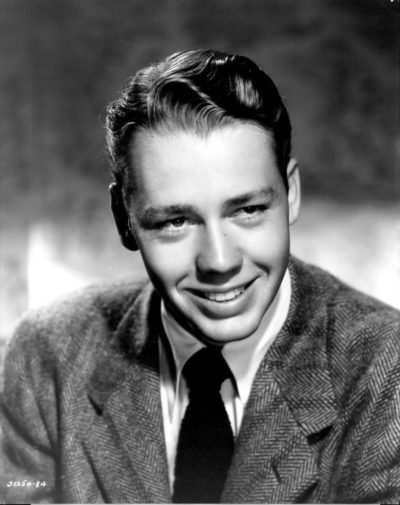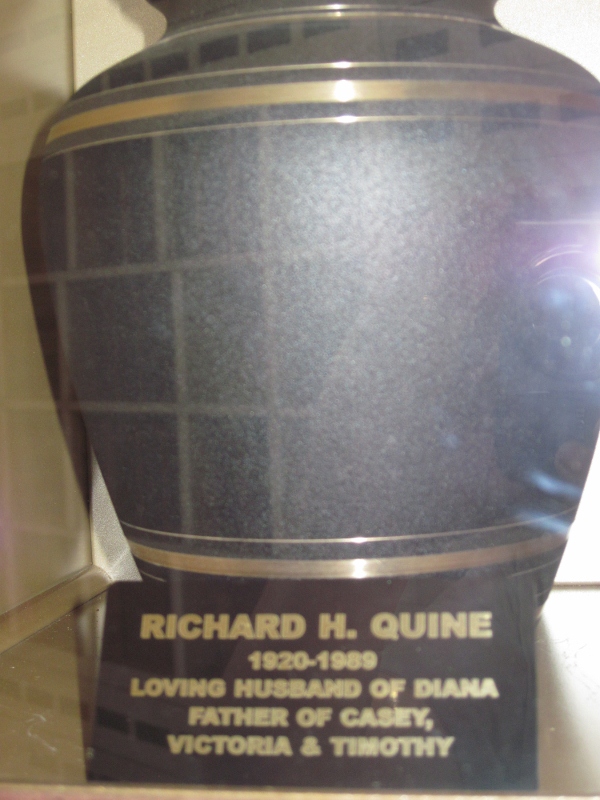Richard Quine (Richard Quine)

Born in Detroit, Richard Quine’s father was an actor. Quine’s family moved to Los Angeles when he was six years old. As a child, he began working as a radio actor and became a minor radio star. He then appeared in vaudeville before moving on to stage roles. He made his film debut in the drama Cavalcade in 1933. After appearing in a few more minor film roles, including supporting roles in Jane Eyre (1934), and Little Men (1934), Quine left Los Angeles for New York City to return to stage acting.[4] In 1939, Quine made his Broadway debut in the Jerome Kern/Oscar Hammerstein II stage musical Very Warm for May in 1939. The following year, he was cast as “Frank Lippencot” in the hit Broadway production of My Sister Eileen, starring Shirley Booth (Quine would reprise his role in the 1942 film version and wrote the screenplay for and directed the 1955 film version). His role in the stage version of My Sister Eileen led to Quine being signed with Metro-Goldwyn-Mayer. Quine’s first film for MGM was Babes on Broadway (1941), starring Judy Garland and Mickey Rooney (Rooney and Quine had been friends since childhood). While at MGM, Quine also appeared in Tish (1942) and For Me and My Gal (1942). During World War II, while still under contract for MGM, Richard Quine served in the United States Coast Guard. After the war, Quine’s acting career stalled and he was dropped by MGM. He and friend William Asher then decided to get into production and directing. The two set about adapting “Leather Gloves”, a short story that appeared in the Saturday Evening Post. The story was later adapted by another writer but Quine and Asher were hired to produce and direct the 1948 film version released by Columbia Pictures.
Richard Quine directed his first solo effort, The Sunny Side of the Street, a musical comedy released in 1951. In the 1950s, Quine directed a number of features including So This Is Paris, Operation Mad Ball (1957), Bell, Book and Candle (1958), and It Happened to Jane (1959, which he also produced). Some of Quine’s earlier projects from this time period, particularly Drive a Crooked Road and Pushover (both 1954), are regarded as classic examples of film noir. Also in the 1950s, Quine began directing television shows including General Electric Theater and The Ford Television Theatre. In 1955, Quine and Blake Edwards created The Mickey Rooney Show, an NBC sitcom starring Quine’s childhood friend Mickey Rooney. The series was canceled after one season. Quine later became a frequent collaborator with Blake Edwards. He wrote the story for Edwards’ 1956 comedy film He Laughed Last and Edwards wrote the screenplay for Quine’s 1962 film The Notorious Landlady. The two also wrote the screenplays for Sound Off (1952), Castle in the Air (1952), All Ashore (1953), Cruisin’ Down the River (1953), Drive a Crooked Road (1954), Bring Your Smile Along (1955), My Sister Eileen (1955), and Operation Mad Ball (1957) together. Richard Quine continued his career directing and producing films and television in the 1960s. He directed Strangers When We Meet (1960), and The World of Suzie Wong (1960), Paris When It Sizzles (1964), How to Murder Your Wife (1965), Synanon (1966), Hotel (1967) and Oh Dad, Poor Dad, Mamma’s Hung You in the Closet and I’m Feelin’ So Sad (1967). In 1966, Quine produced The Jean Arthur Show, a sitcom that aired on CBS starring Jean Arthur. That series also lasted one season.
In addition to producing, directing and screenwriting, Richard Quine was also a lyricist. He wrote the lyrics “Be Prepared”, a song included in the film It Happened to Jane (1959) which he also produced and directed. In 1962, two songs written by Quine, “Going Steady With a Dream” and “Strangers When We Meet” (which was the theme to the 1960 film of the same name that Quine directed), for the film Don’t Knock the Twist. Richard Quine also wrote the theme song to his 1964 film Sex and the Single Girl. In the 1970s, Quine directed three episodes of Peter Falk’s Columbo, including “Dagger of the Mind”, an episode set in Britain. He also worked on another, much less successful NBC Mystery Movie series, McCoy, reuniting him with star Tony Curtis who Quine directed in So This Is Paris and Sex and the Single Girl (1964). His final completed film as a director was for the 1979 film The Prisoner of Zenda, starring Peter Sellers. In 1979, Quine was hired to direct another Sellers’ film The Fiendish Plot of Dr. Fu Manchu (1980). Before the script was even completed, Quine was fired due to “creative differences” he had with Sellers. After an extended period of depression and poor health, Quine shot himself in the head at his Los Angeles home on June 10, 1989. He was taken to UCLA Medical Center where he died at the age of 68. His remains are interred in the Room of Prayer columbarium at Westwood Memorial Park in Los Angeles.
Born
- November, 12, 1920
- USA
- Detroit, Michigan
Died
- June, 10, 1989
- USA
- Los Angeles, California
Cause of Death
- suicide
Cemetery
- Westwood Memorial Park
- Los Angeles, California
- USA



